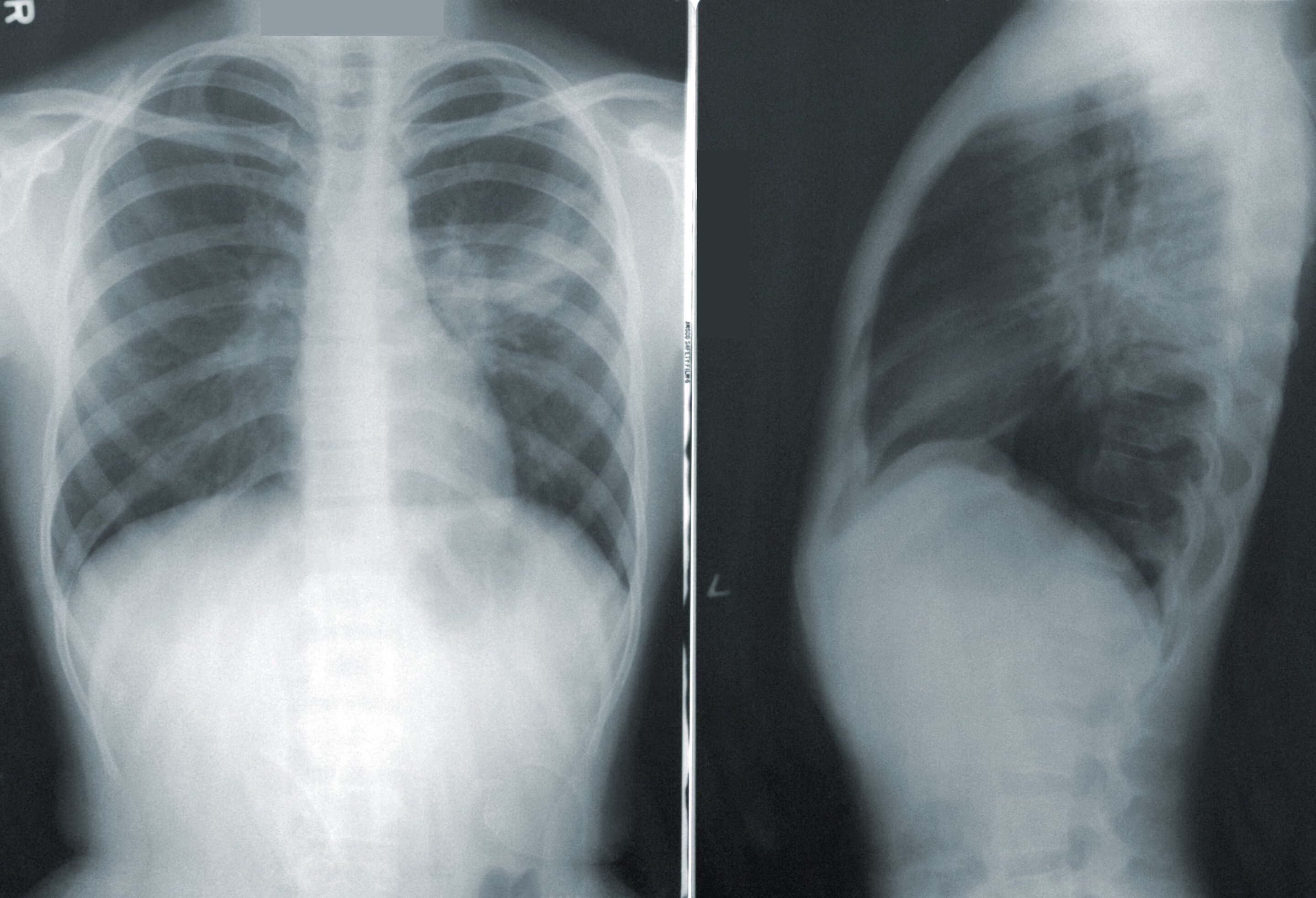New analysis estimates the effects of race-neutral lung function testing on patients, hospitals, and beyond


Removing race from equations that estimate lung function will shift the categorization of disease severity across patient populations, moving more Black individuals into an advanced disease category, according to new research led by scientists at Harvard Medical School. At the same time, more white and Hispanic people would be reclassified as having less advanced illnesses.
The findings, the research team said, suggest that adjusting lung function tests to include race—as has been the case historically—likely normalized worse lung function and downplayed disease severity among Black people.
The work, to be published May 19 in the New England Journal of Medicine, is being presented simultaneously at a special session of the annual meeting of the American Thoracic Society.
“The race-based formula to estimate lung function assumes that different race groups have different normal lung function, and it’s known that this can obscure disease severity in many individuals,” said study senior author Raj Manrai, assistant professor of biomedical informatics in the Blavatnik Institute at HMS. “Yet the myriad implications of race adjustment and the effects of removing race have not been comprehensively quantified—our study is an attempt to do so.”
The analysis shows that removing race from current lung function estimates would change who is diagnosed with respiratory illness and, in turn, who qualifies for disability compensation and veterans’ benefits and who’s eligible for jobs that require certain levels of lung function.
Manrai and study first author James Diao previously led research to assess the implications of removing race from estimates of kidney function.
As with their past studies on race-free kidney equations, the goal of the new research is to capture the magnitude of the effects and prepare clinicians and hospital systems to provide optimal care to patients whose disease status may change as a result of the shift to race-neutral lung function equations. The analysis should also help policymakers plan for shifts in disease burden that will result in different eligibilities for certain occupations and for disability payments, the researchers said.
“Our study aims to quantify the impact of using race to define what is normal variation and what is classified as impairment or disease,” said Diao, a fourth-year medical student at HMS and a researcher in the Manrai lab. “We found profound clinical, financial, and occupational implications of how race is operationalized in pulmonary function testing.”
Shedding the legacy of race-based medical testing and diagnosis
Race is a notoriously unreliable indicator of biologic variation across populations. Despite this, certain medical tests and treatments continue to use race to capture variations in disease across patient groups of different ancestries. Medical organizations have recently started to phase out the use of such race adjustments. This shift began in 2020 with the gradual removal of race from the way clinicians estimate kidney function. More recently, similar questions have been raised about lung function.
Since the mid-19th century, a test called spirometry has been used to gauge a person’s lung function. Spirometry measures how much air someone can breathe in and out of their lungs, as well as how quickly one can exhale the air out. To determine disease severity these objective measures of lung capacity are compared with expected values that differ by race, with lower scores expected for Black individuals. The interpretation of spirometry test results has thus relied on reference ranges that reflect assumptions of innate differences in lung function among races, the researchers said.
A group called the Global Lung Function Initiative (GLI), which brings together physiologists, respiratory experts, epidemiologists, and statisticians, is now leading the charge to modernize how lung function tests are interpreted. In 2022, GLI replaced race-based equations with race-neutral ones. The American Thoracic Society and the European Respiratory Society have endorsed these updated equations.
Race-neutral estimates, although imperfect, offer an opportunity to move beyond historical assumptions that group-level differences in lung function are natural and benign, the researchers said.
“These organizations have called for exactly the type of data we’re providing in our analysis,” Manrai said. “Our findings can give these medical organizations the necessary details, outcomes, and implications to make informed decisions and issue a unified set of recommendations.”
Projected changes and implications
For their analysis, the team used medical records, including spirometry scores, from a total of 370,000 participants in the National Health and Nutrition Examination Survey, the UK Biobank, the Multi-Ethnic Study of Atherosclerosis, and the Organ Procurement and Transplantation Network.
The researchers calculated lung function scores for each of the 370,000 participants using both the traditional method, which includes race as a variable, and the newly recommended formula that does not include race. They then examined how using one formula versus the other affected various outcomes, such as diagnoses of lung disease, classification of disease severity, priority for lung transplantation, and eligibility for disability compensation.
The researchers also determined whether the race-based and race-neutral formulas accurately predicted respiratory symptoms such as wheezing and shortness of breath, as well as outcomes such as the need for medical care, risk for developing new lung disease, the risk of dying from lung disease and death from any other cause.
The analysis showed that using or excluding race did not affect the overall accuracy of predicting symptoms and clinical outcomes. However, the two equations classified disease severity differently. Adding or removing race shifted some people with the same lung-test scores to a different disease category.
Overall, the greatest shifts occurred among Black and white individuals, the analysis showed, while the effects of removing race were less consistent among Asian individuals.
Under the race-neutral equation, more Black patients emerged as sicker and were classified as having more advanced disease, while more white and Hispanic patients were classified as having less severe disease.
The finding, the researchers said, underscores how the use of race may have long obscured lung disease severity for many Black individuals.
The research team then used these findings to project how use of the race-neutral formula would affect the entire U.S. population.
The projected changes include:
- In total, 12.5 million individuals would have a different level of respiratory impairment, including a 141 percent increase in the number of Black individuals with nonobstructive impairment and a 69-percent decrease in the number of white individuals with nonobstructive impairment.
- More than 2 million individuals would have a different severity grade of chronic pulmonary obstructive disease (COPD), including an increase of 428,000 in the number of Black people with moderate to severe COPD and a decrease of 1.1 million in the number of white people with moderate to severe COPD.
- Nearly 2.3 million people would experience a change in their occupational eligibility for firefighting positions. Some 754,000 Black Americans would no longer be eligible for firefighting jobs, while 1.27 million white Americans would be newly eligible for them.
- Some 413,000 veterans would receive different disability compensation, with a projected total increase of $1.1 billion increase in payments to Black veterans and a projected $0.5 billion decrease in compensation to white veterans. The redistributed amount represents less than 2 percent of the total VA disability compensation spending reported in 2022.
Reclassifications always involve trade-offs, the researchers said. People classified with more advanced lung disease may gain access to certain treatments and benefits but lose access to others. For example, greater disease severity may disqualify patients with lung cancer from surgery to remove lung tumors. Patients with more advanced lung disease may qualify for breathing support earlier if they develop ALS (amyotrophic lateral sclerosis), a progressive neuromuscular disease that often interferes with breathing.
The findings are relevant to clinicians who treat patients with lung disease, to pulmonary function laboratories, and to hospital administrators, who will need to plan for changes in patient volume stemming from disease severity reclassifications.
For instance, a serious uptick in the number of patients classified as having non-obstructive lung impairment would require follow-up lung capacity testing.
“If a hospital or a pulmonary function testing lab are not prepared for an increase in the number of people who would require that type of testing, they could consider steps to build more capacity,” Diao said.
Yet, the ability to ramp up services and meaningfully respond to shifts in patient volume will likely vary across hospitals and geographic locations, the researchers noted. Such baseline gaps are deeply rooted in racialized policies and decisions about resource allocation that have prioritized certain populations over others.
Thus, the researchers added, such baseline gaps in access to care should be factored in any planned responses that aim to ensure better access to care.
Co-authors included Yixuan He, Rohan Khazanchi, Max J. Nguemeni Tiako, Jonathan I. Witonsky, Emma Pierson, Pranav Rajpurkar, Jennifer R. Elhawary, Luke Melas-Kyriazi, Albert Yen, Alicia R. Martin, Sean Levy, Chirag J. Patel, Maha Farhat, Luisa N. Borrell, Michael H. Cho, Edwin K. Silverman, and Esteban G. Burchard.
More information:
James A. Diao et al, Implications of Race Adjustment in Lung-Function Equations, New England Journal of Medicine (2024). DOI: 10.1056/NEJMsa2311809
Citation:
New analysis estimates the effects of race-neutral lung function testing on patients, hospitals, and beyond (2024, May 19)
retrieved 19 May 2024
from https://medicalxpress.com/news/2024-05-analysis-effects-neutral-lung-function.html
This document is subject to copyright. Apart from any fair dealing for the purpose of private study or research, no
part may be reproduced without the written permission. The content is provided for information purposes only.





